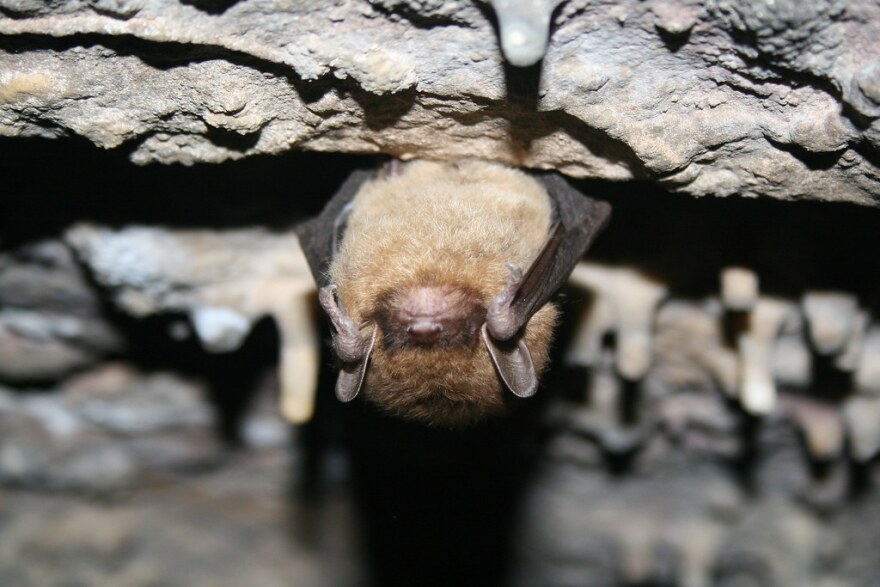New research out of the University of Michigan finds evidence that some bats have a resistance to white nose syndrome.
White nose syndrome has devastated North American bats, with some populations seeing losses from 90 to 100%. The fungus awakens bats during hibernation, causing them to use up their fat stores before Spring.
The new study compares genes from bats taken before the arrival of white-nose syndrome with those that have survived the infection.
Giorgia Auteri worked on the study. She said the goal was to see if the bats might be evolving resistance to the disease.
“That can help us manage the tempo and pace of our conservation efforts as well as help us figure out if there is a glimmer of hope.”
Specifically, the study found that bats better able to sleep through the winter had a better chance of survival.
“It could be that bats that are genetically predisposed to be deep sleepers or to be a little bit fatter than the average bat are better able to survive this disease because they have more fat reserves and conserve their energy and are able to make it through hibernation with the fungus.”
Auteri said some of the bats she studied had genetic markers that could signal evolutionary adaptation to white nose syndrome.
“This study gives us some hope that some bats seem to have a genetic edge for surviving the disease but we don’t know if that edge is strong enough that populations will be able to recover in the face of the fungus.”
Auteri said the study focused on a small cross section of bats in Michigan. She hopes to expand her work to look at more North American bats to compare results.
But, she said, it’s clear bats are still vulnerable and conservation efforts need to continue.

